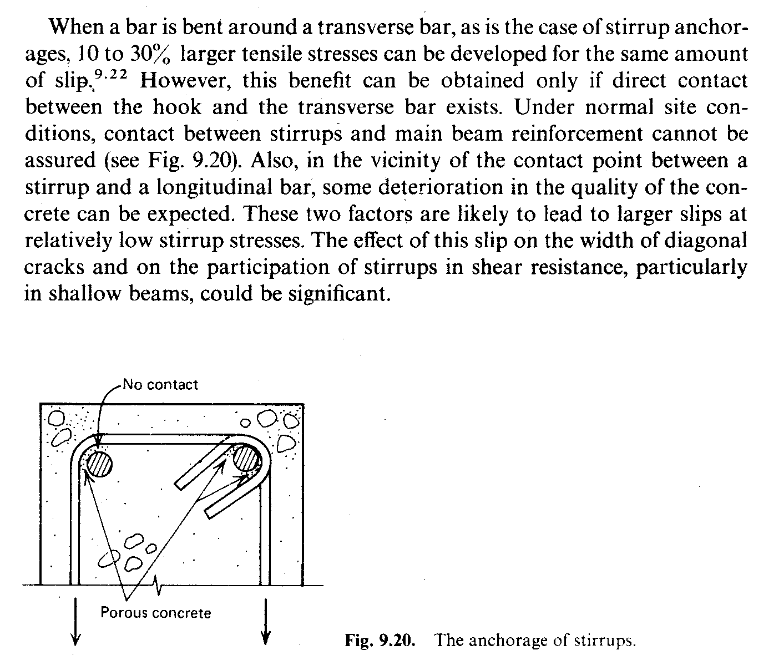I have a query similar to the lines of thread507-384790. Regarding confinement to the core of high strength concrete shear walls as well as restraint of longitudinal reinforcement, concrete codes typically require some form of ties to be detailed at boundary regions, with longitudinal bars requiring to be in direct contact with the ties (eg in AS3600 the Australian concrete code the code states direct contact is required). From what I've seen on site on various projects, there are always some ties which for whatever reason cannot achieve direct contact with the longitudinal reinforcement. I've discussed with more senior engineers at my company and some are of the belief that even if there is separation between the corner of a tie and a longitudinal bar, due to the high compressive strength of concrete it will not crush and will still provide a load path from the longitudinal bar to the corner of the tie through which to restrain buckling (although I'm not convinced that under earthquake actions this can be relied upon if compressive strains are high). The only reference I've ever found to separation between a tie and a bar is from Reinforced Concrete Structures (Park and Paulay 1975), where it is discussed in the context of shear ties (snapshot attached), stating that only direct contact is reliable. I'd imagine something similar would be the case for longitudinal bars in columns/walls with ties around them.

Has anyone ever come across any references or documentation that discusses the effect of indirect contact between a tie and a bar in the context of confinement, or restraint of longitudinal bars against buckling, either for columns or for RC shear walls? In my experience direct contact is not always achievable due to site tolerances, manufacturing issues, etc.

Has anyone ever come across any references or documentation that discusses the effect of indirect contact between a tie and a bar in the context of confinement, or restraint of longitudinal bars against buckling, either for columns or for RC shear walls? In my experience direct contact is not always achievable due to site tolerances, manufacturing issues, etc.
